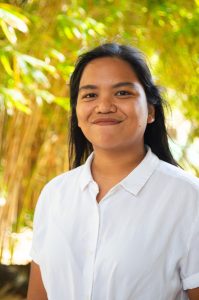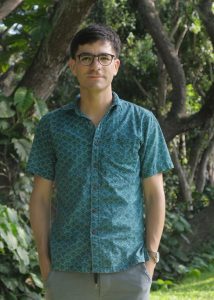Winners of Library Treasures Summer 2025 Scholarships
Ruizhi Choo (Ph.D. Student, Department of History), “Scourges & Sinews of Empire: Insects, Imperialism & Knowledge Production in British Malaya”

Human efforts to understand, contain, and destroy insects transformed entire landscapes, precipitating scientific innovation, ecological change, and cultural adaptation. Yet the role of insects in even twentieth century history remains poorly understood. I thus examine how colonial authorities imagined, studied, and sought to control insects in British Malaya between 1890 and 1942. In particular, I focus on three key insect categories in distinct Malayan terrains: rhinoceros beetles, which threatened coconut crops from 1889 onwards; the “white ants” or termites which infested rubber plantations in the early 1900s; and locusts which laid waste to Malayan rice fields in 1912. By employing archival material found in the Hamilton Library’s Pacific, Hawaiian, Asian, and Main collections, I explore how these creatures, often described as pests, represented not just scourges, but also sinews of empire: the connective tissue that braided natural environments, local communities, and empires into new entanglements of politics, economics, science, and knowledge production.
Veronica Alporha (Ph.D. Candidate, Department of History), “Imperial Anxiety and Sentiment in the Hawaiian Sugar Plantation Archives”

The Hawaiian Sugar Planters Association (HSPA), established in 1895, functioned to uphold both the corporate interests of the sugar industry and the state’s desire for stability in Hawai’i. The HSPA was a decisive and powerful entity in the islands that controlled the nascent plantation society at the turn of the century. Through the first half of the 1900s, the association developed mechanisms to shape the communities of migrant worker populations in the islands and pursued measures to ensure control and subordination either through incentives or force. The expansive operations of the association produced voluminous documents that constituted the HSPA Plantation Archives currently housed in the Special Collections of UH Manoa’s Library. Most plantations within the HSPA participated in the archiving of their companies’ documents, including corporate records, personnel records, correspondences, and cultivation contracts, among others. Through an examination of these documents, this study surfaces affect and sentimentality within the institutions of the sugar industry otherwise characterized by its ruthless efficiency, business rationality, and scientific rigor. Taking the cue from Ann Laura Stoler, I intend to read these papers “along the archival grain” to reveal and, indeed, center sentiment in the working of the powers in the Hawaiian plantations.
Hilson Reidpath (Ph.D. Candidate, Department of East Asian Languages and Literatures), “A Rich Sea to Discover: An Introduction to the Okinawan magazine Aoi Umi in the UHM Library’s Collection”

The goal of this project is the formation of an online database of UHM Library’s holdings of the Okinawan culture, politics and news magazine Aoi Umi: Okinawa no kyōdo gekkan shi (Blue Ocean: The Local Monthly Magazine of Okinawa). Aoi Umi is an important postwar magazine in Okinawan society that offers a unique, Okinawa-focused perspective seen in articles on contemporary political issues, reviews of local art, books, and music as well as coverage of topics like the Okinawan diaspora, literature, and history. The UHM library is in a unique position for this project as we have one of the most extensive collections of the magazine in the US, including rare issues that are difficult to find in other archives, even in Okinawa. The final product of this project will be a website I build that features an introduction to the magazine and its publication history as well as an annotated bibliography of UHM’s holdings and excerpts of English translations of articles from select issues.
Terri-Lee Bixby (Ph.D. Candidate, Department of History), “Tahitian Texts: 18th-19th Century Print Culture and its Impacts in Tahiti”

There are gaps in Tahitian scholarship regarding the ways that knowledge production, publication, and dissemination affected European and Tahitian perspectives of 18th Century encounters. Using archival Tahitian texts such as Te Vea No Tahiti, Parau fenua, Parau omuaraa note Bibilia, and Parau tupuna, this paper focuses on understanding the intellectual history of European-Tahitian interactions and engages with the following questions: How were ideas about Tahitian encounters captured, published, and/or otherwise spread throughout Europe and the Pacific? How did personal diaries create, reflect, and uphold these ideas? What were the tangible outcomes derived from the ideas circulated through print culture? This paper seeks to build the foundations of a dissertation chapter focusing on Tahitian print culture and the significance of Indigenous epistemologies concerning Tahitian Indigenous knowledge production and circulation of ideas and text to engage in resistance to European colonial stereotypes and frameworks. The Pacific Archive Collections available at Hamilton Library offer crucial sources that offer insights into Indigenous Tahitian perspectives.
Haley Cremer (MS Candidate, Department of Natural Resources and Environmental Management), “Historic Fishponds of Hawaiʻi: Spatial Inventory and Analysis of Loko Iʻa Land Change in Coastal Regions”

Rapid development and urbanization dominated landscapes in Hawaiʻi in the decades that followed annexation in 1898. As a result, many loko iʻa (Hawaiian fishponds) were destroyed and filled, and dynamic coastal areas became heavily urbanized. Efforts made in the past century to catalog missing and surviving fishponds have had varying criteria, and their results have largely existed undigitized and unconsolidated. This has left a combined data gap of contextual and spatial information of both historic and existing fishponds. This study proposes a bi-phase inventory and mapping approach to comprehensively assess land cover and land use change of loko iʻa, focusing on coastal regions. Research methods include a literary and spatial archival review to identify and map all known existing and historic fishponds, relying on the unique literature works and map collections found only within Hamilton Library’s Hawaiian and Pacific Collections and archival surveys, maps, and aerial images from the Maps, Aerial Photographs, and Geographic Information System (MAGIS) cartographic collection. The spatial data generated will then be used to compare and calculate land cover change and identify a coastal region site to explore land use trends in-depth. In addition, the spatial information generated from the mapping phase will be used to create a public facing Esri-based fishpond map viewer. The data collected in this inductive research process is intended to be the foundation for future work, and will be compiled to support education, outreach, land use planning, and assessments for restoration.

